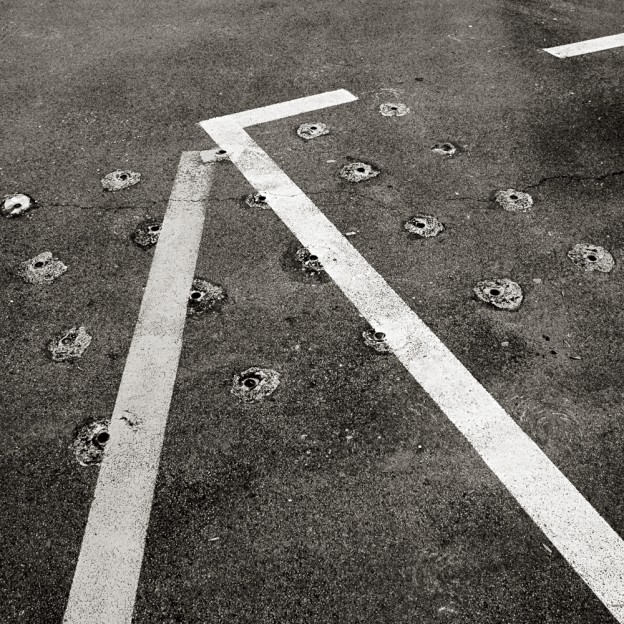Photography and my soul take parallel paths. Nothing is concealed between them as they are tied by a strong kinship, just like the one that ties a father to his children. It can be said that blood is what happens between my photos and me, that’s why this project is radically intimate and its axis, parenthood itself: its mysterious, delicate and constant flow of giving and taking.
It has a lot to do with this relationship and also with Vitoria, a city where I arrived, just as many children in the sixties, wrapped in diapers of hardship. The outer story is such a commonplace that I decided to remove it.
I remained here until I had to observe my own ritual of uprooting and leave, not the tearful stories of this landscape, but my family and my very self tied to it. What is called innocence, accurately, I guess. All the things that hold identity tight, for good and for worse.
Time has drifted away, so did the hard knocks and consecutive demolitions of that boy who ran across Zaramaga Quarter, among the asphalting machines and through the groundwork of a new school, nowadays silent and forgotten: the elders and the buried of the near cemetery are the only residents of this place, that used to show the frantic activity of a beehive.
“Low” is a project of self-reconstruction through art. My family’s settlement is also a paradox, a close and distant landscape, residing (and resisting) time and social erosions in brave deed. I’m tracking my own footprints, touching the skin of the city, the burning scars of time in walls and concrete. Open wounds, closed wounds, patches, mendings, new stones hiding older ones, the artificial grass tainting of green that wasteland so called football arena, new blocks of houses planted on the fields my father and I used to walk through, holding hands, the new mall replacing old forges and foundries, full of sweaty workers.
“Low” is a guided tour of the artist to himself. He is the tourist, the guide, and the foreigner, too.
It’s not a trivial quest, it’s not about taking a snapshot to show like a trophy to relatives and friends.
It’s about finding the thread, the foot step, the vibration of his spirit when life was not yet making interferences.
No traces in the sky. However, carved on earth, a whole written life account, shyly and secretly written so far can be read: the link between the artist and the one he used to be.
“Low” is not an open project nor a closed one, but an approaching to something that adopted a form and now adopts another. It doesn’t alter anything. It doesn’t move the pieces from their original place. It only puts them under the fragmented lenses of an emotional microscope, starting in the very moment the artist reclaims his identity.
Further to he sentimental premise, it also traces a time journey, across the surface of a city deeply changed along the last decades. Witness and victim, just like many other cities, of the urbanistic expansion and the theft of clear spaces by the geometric multiplication of vehicles.
What was dust is now asphalt and concrete. Where children used to play around became cram-full parking lots. Nothing new, no significant features except for the ones who discovered life in those outskirts of industrial development, not different from what others do with the end of Millennium.
“Low” joins, though not always, pieces by couples, as the author’s eye and his soul do. They build structures of unpremedited beauty. They pinpoint places in rememberance and leave open ways for the future to come. New patches and amends will hide new wounds.
This project not only travels through the externals, the foreign, but also inquires smaller formats in black and white as a vehicle, in the intimate, motionless territory of home. Much alike details can be found in the private space, as unaltered superhuman structures, with no substantial variation in texture.
Shelter and starting point.













